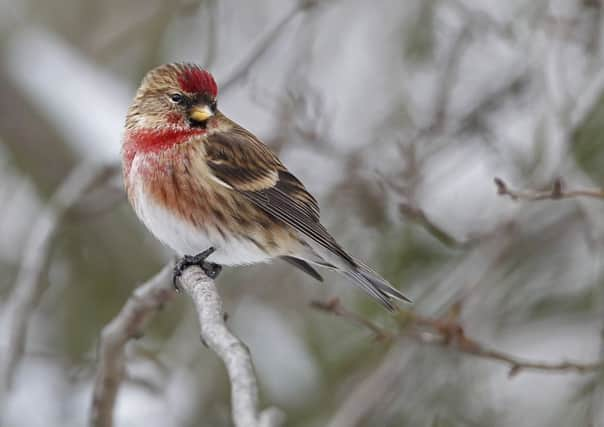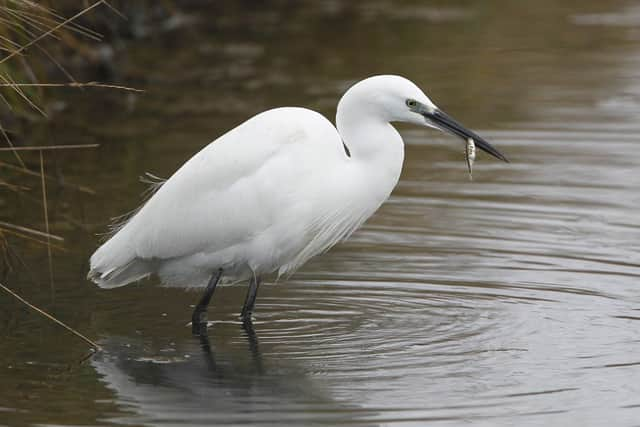Monumental survey of wild birds in Sussex shows startling changes


‘The Birds of Sussex’ by the Sussex Ornithological Society (SOS), which is launched on 25 January 2014 at Haywards Heath, charts the fortunes of 397 bird species that have been seen in Sussex. It is based on observations by over 1,000 volunteers covering every corner of the county.
The book highlights the arrival of several new breeding species in recent years, such as the Little Egret, Red Kite and Egyptian Goose.
Advertisement
Hide AdAdvertisement
Hide AdThe species that has increased the most is the Buzzard; it was rare in Sussex in 1990 but has swept across almost the entire county in just 20 years.


Other species doing well include the Barn Owl, which has increased from around five pairs to 200, and the Nuthatch, whose range increased from 55% of the county to 73%
However, the survey also showed which species are doing badly, with several teetering on the brink of extinction in the county, including the Willow Tit, Wood Warbler, Snipe, Hawfinch and Yellow Wagtail.
Some species, although still widespread, are showing signs of alarming declines, such as the Willow Warbler, Cuckoo and Spotted Flycatcher.
Advertisement
Hide AdAdvertisement
Hide AdMany of the photos used in the book were taken at Warnham LNR at Horsham, where the viewing hides and feeders draw all sorts of birds close to those watching.
The woods in the area are one of the last places in Sussex where Wood Warblers might be found in spring, although their future in the county is now very uncertain.
The nature reserves at Pulborough Brooks, Amberley Wild Brooks and Arundel help make this one of the best areas for wild birds in Sussex, with internationally important numbers of wild ducks, especially Wigeon, Pintail and Teal.
Pulborough Brooks has more breeding species than any other inland site in Sussex, and was third overall behind Pett Level and Pagham Harbour. There are several outstanding photographs in the book of the Nightingales at Pulborough Brooks, one of the best sites to see them in the country.
Advertisement
Hide AdAdvertisement
Hide AdAdrian Thomas of the RSPB, who edited the new book, said: “Our wild birds tell us so much about the state of our county.
“In front of our eyes, new birds are arriving as our environment is changing or as some species claw their way back after centuries of persecution.
“But, sadly, so many of our once-common birds are in serious decline. The book is a celebration of the richness of birdlife in Sussex but it is also a warning sign.”
The extensive woodlands of the Weald are home to a large number of woodland birds, including the Mandarin, a very attractive duck originally from China, which nests in tree holes and often in owl nestboxes.
Advertisement
Hide AdAdvertisement
Hide AdTwo areas stand out in the area: the heathlands of Ashdown Forest, a vital refuge for Dartford Warblers, Nightjars, Woodlarks and Stonechats; and Weir Wood Reservoir, which draws in a wide range of waterbirds, including regular sightings of Ospreys.
Crawley also looks likely to be the route by which Ring-necked Parakeets colonise the county from their Surrey and London strongholds.
The book is based on the analysis of over two million bird records collected over more than 50 years.
The recent survey was a collaboration of the SOS and the British Trust for Ornithology (BTO). Over 300 surveyors visited almost every one of the 1,039 2km x 2km squares in Sussex in summer and in winter, undertaking 7,775 hours of rigorous surveys, and their results were augmented by data from another 700 birdwatchers.
Advertisement
Hide AdAdvertisement
Hide AdThe 600-page book took 18 months to compile and is the work of a large team of Sussex volunteers, including the editor, writers and photographers. It includes stunning images taken by 40 Sussex birdwatchers that illustrate the diversity and beauty of our wild birds.
The book also includes distribution maps for all the key species, over 200 charts and figures, as well as chapters on bird habitats, conservation and migration in Sussex.
The book costs £35 plus p&p, but non-members of SOS can currently take advantage of a special ‘membership + book’ offer. Go to www.sos.org.uk for full details.
Report and pictures contributed by the Sussex Ornithological Society.